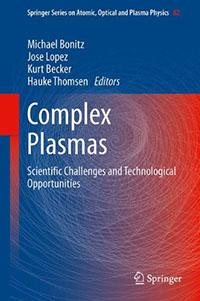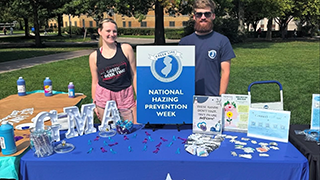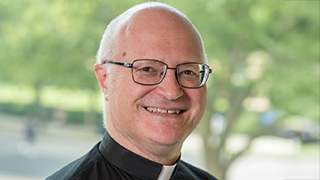New Book Highlights Physics Faculty Research - Seton Hall University
Tuesday, March 18, 2014

"If you combine all the stuff we can see in the universe. Solid, liquid, and gas matter combined together are only about 1% of this visible matter. The other 99% of the observable matter finds itself in the form of plasmas." explains Professor Jose L. Lopez of the Department of Physics at Seton Hall University.
Even though, plasmas are very abundant they are deceptively difficult to understand because their behavior is extraordinarily diverse and varied. The main reason for this complexity is that plasmas tend to very often interact with the other three states of matter. When plasmas interact with solids particles, the solid materials acquire electrical charge and in some cases interact with small solid particles forming what are known as dusty or complex plasmas. This plasma and solid materials interaction is commonly observed in the burning dust clouds of comets.
On earth complex plasmas are extremely important for many industrial processes such as semiconducting and microelectronics manufacturing. Professor M. Alper Sahiner, Chair of the Department of Physics and Director of the Advanced Materials Synthesis and Characterization Laboratory at Seton Hall University uses laser pulses to create complex plasmas to deposit solid thin films on silicon and germanium wafers. Silicon and germanium are semiconductor materials of critical importance to microchip and solar cell manufacturing.
Sahiner’s physics colleague, Jose L. Lopez, Director of the Laboratory of Electrophysics and Atmospheric Plasmas (LEAP) studies the fundamental behaviors of complex plasmas in various chemical processes. In recent research work, Professor Lopez and his research team have studied the formation of hydrocarbon particulates in plasma processing systems. This complex plasma induced particulate formation has been found to be detrimental in such major industrial processes as ozone generation used in water treatment applications.
The numerous scientific discoveries of these two Seton Hall physics faculty members along with many of the world's other leading complex plasma researchers has recently been compiled into a new book published by Springer, one of the primer scientific publishers. The new book entitled Complex Plasmas: Scientific Challenges and Technological Opportunities seeks to make more assessable this very important yet rather difficult subject to a wider audience.
The new book is a direct result of an international collaboration between Seton Hall complex plasma researchers and other researchers in the United States and Germany. This international collaboration has jointly worked over the last eight years to organize the very successful Graduate Summer Institutes on Complex Plasmas summer school series. The last summer school, the 3rd Graduate Summer Institutes on Complex Plasmas was organized and held at Seton Hall University from July 31 to August 8, 2012.
This new book Complex Plasmas: Scientific Challenges and Technological Opportunities was edited by Jose L. Lopez of Seton Hall University along with Michael Bonitz and Hauke Thomsen of University of Kiel in Germany and Kurt Becker of NYU-Polytechnic in Brooklyn, NY. Professor Sahiner contributed a chapter on the characterization of local structures in plasma deposited semiconductors by X-ray absorption spectroscopy to the new book.
The book was primarily written to help in the further education of advanced undergraduate, graduate students, or postdoctoral researchers seeking to specialize in plasma physics. The book provides a comprehensive introduction to the physics of complex plasmas, a discussion of the specific scientific and technical challenges they present, and an overview of their potential technological applications. The book is now available from Springer through this link.






